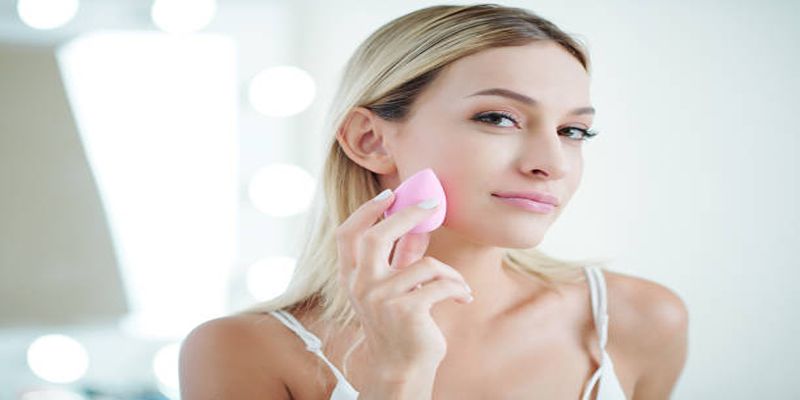Deadly Beauty: How Your Makeup Sponge Could Be Endangering Your Skin
Aug 22, 2024 By Celia Shatzman
Makeup sponges, often hailed as essential tools for achieving a flawless complexion, might harbor more dangers than one would expect. While these sponges are celebrated for their ability to blend foundations and create seamless finishes, they can also become breeding grounds for bacteria if not properly cleaned and maintained. The porous nature of these sponges can absorb not only cosmetic products but also dirt, oil, and microorganisms from the skin. Consequently, using a contaminated sponge can lead to skin irritations, breakouts, and even more severe infections. Understanding the risks associated with makeup sponges is vital for anyone dedicated to skincare and beauty. In this article, we will explore the hidden dangers of makeup sponges, how to effectively clean and care for them, and alternatives to consider for a safer makeup routine.
The Science Behind Makeup Sponges

Makeup sponges are typically made from materials such as polyurethane or latex, which contribute to their softness and flexibility. This design allows them to easily conform to the contours of the face, ensuring an even application of products. However, the very properties that make these sponges effective tools also pose a challenge in terms of hygiene. The pores of the sponge can trap not only makeup but also skin cells and bacteria, creating a microenvironment conducive to microbial growth.
Studies have shown that damp sponges can harbor significant levels of bacteria, including harmful strains like Staphylococcus aureus and E. coli, especially if they are not cleaned on a regular basis. Understanding this science highlights the importance of incorporating cleaning routines into your makeup application process to safeguard your skin health.
Bacterial Growth and Contamination
Bacterial growth on makeup sponges often goes unnoticed, as the sponge may appear clean to the naked eye. However, the damp and warm environment created by using these sponges can accelerate the proliferation of bacteria. When sponges are stored in a sealed bag or container without adequate airflow, moisture gets trapped, further promoting microbial growth. Regularly using a sponge that has not been adequately cleaned can introduce a range of contaminants to the skin, leading to a host of issues from clogged pores to infections.
Signs of Sponge Contamination
Recognizing when your makeup sponge is due for a replacement or a deep clean is crucial in maintaining skin health. Some common signs of contamination include an unpleasant odour, visible discolouration, or a texture that feels slimy or sticky to the touch. Additionally, if you notice an increase in breakouts or skin irritations after using your sponge, it may be a signal that its time for a thorough cleaning or disposal. A general rule of thumb is to wash your sponge after every use and replace it every few months, depending on the frequency of use and condition of the sponge. By being vigilant about these signs, you can better protect your skin from potential harm.
Proper Cleaning Techniques
Keeping your makeup sponge clean is essential for preventing bacterial growth and maintaining skin health. Here are some effective cleaning techniques to ensure your sponge stays in top condition.
Daily Cleaning Method
For daily maintenance, rinse your sponge thoroughly under warm water after each use. Apply a small amount of gentle soap or a dedicated sponge cleanser, and work it into the sponge using your fingers. Be sure to squeeze the sponge gently to release any trapped makeup and impurities. Rinse thoroughly until the water runs clear to ensure all soap residue is removed.
Deep Cleaning Method
To perform a deep clean, you should set aside time once a week. Begin by soaking the sponge in warm, soapy water for around 10 to 15 minutes. This helps loosen any built-up product. After soaking, use your hands to gently massage the sponge and squeeze out the soapy water. Rinse under warm running water, repeating the process until the sponge is free of all dirt and soap.
Sanitizing Method
For an extra level of cleanliness, consider sanitizing your sponge every few weeks. After washing and rinsing, immerse it in a mixture of water and a few drops of antiseptic solution or vinegar for about 5 minutes. Rinse thoroughly to ensure no cleaning solution remains, as residual soaps can irritate the skin.
Drying and Storage
After cleaning, it's critical to let your sponge dry properly. Squeeze out any excess water and lay the sponge flat on a clean towel or hang it to air dry. Avoid storing your sponge in a closed bag or container while it's still damp; instead, opt for a breathable storage solution to prevent moisture buildup.
By following these cleaning techniques, you can extend the lifespan of your makeup sponge and maintain a healthier makeup application process.
Alternatives to Traditional Makeup Sponges

If you're concerned about the hygiene challenges posed by traditional makeup sponges, there are several alternatives that can help you achieve a flawless look without compromising skin health. Here are some noteworthy options:
Application Brushes
Makeup brushes, particularly those made from synthetic fibers, provide a hygienic alternative to sponges. Brushes can deliver a more controlled application and often require less product. Additionally, they can be cleaned more easily, thereby reducing the likelihood of bacterial growth.
Silicone Sponges
Silicone makeup sponges have gained popularity due to their non-porous nature, which makes them less likely to absorb bacteria or product. They are easy to clean, simply requiring a wipe-down with soap and water after each use. Silicone sponges can also be more durable, providing a long-lasting option for makeup application.
Fingers
Using your fingers for makeup application is another effective method. The heat from your skin helps to warm the product, allowing for a seamless blend. To maintain hygiene, ensure your hands are clean before application and consider using a disposable makeup applicator for products like foundations or creams.
Cotton Pads or Balls
For certain applications, such as for removing makeup or applying toners, cotton pads or balls can be a practical alternative. They provide softness and can be disposed of after use, reducing concerns about contamination. However, they may not be ideal for applying liquid foundations or thick creams.
Final Thoughts
Maintaining the cleanliness of your makeup tools, particularly sponges, plays a vital role in ensuring healthy skin and an effective makeup application. By implementing consistent cleaning routines and being mindful of the signs of contamination, you can greatly reduce the risk of bacterial growth and skin irritations. Additionally, exploring alternative application methods allows you to adapt your beauty routine to better suit your preferences and enhance hygiene. Ultimately, investing time in the care and maintenance of your makeup tools not only improves your makeup experience but also contributes to the overall health and appearance of your skin.







